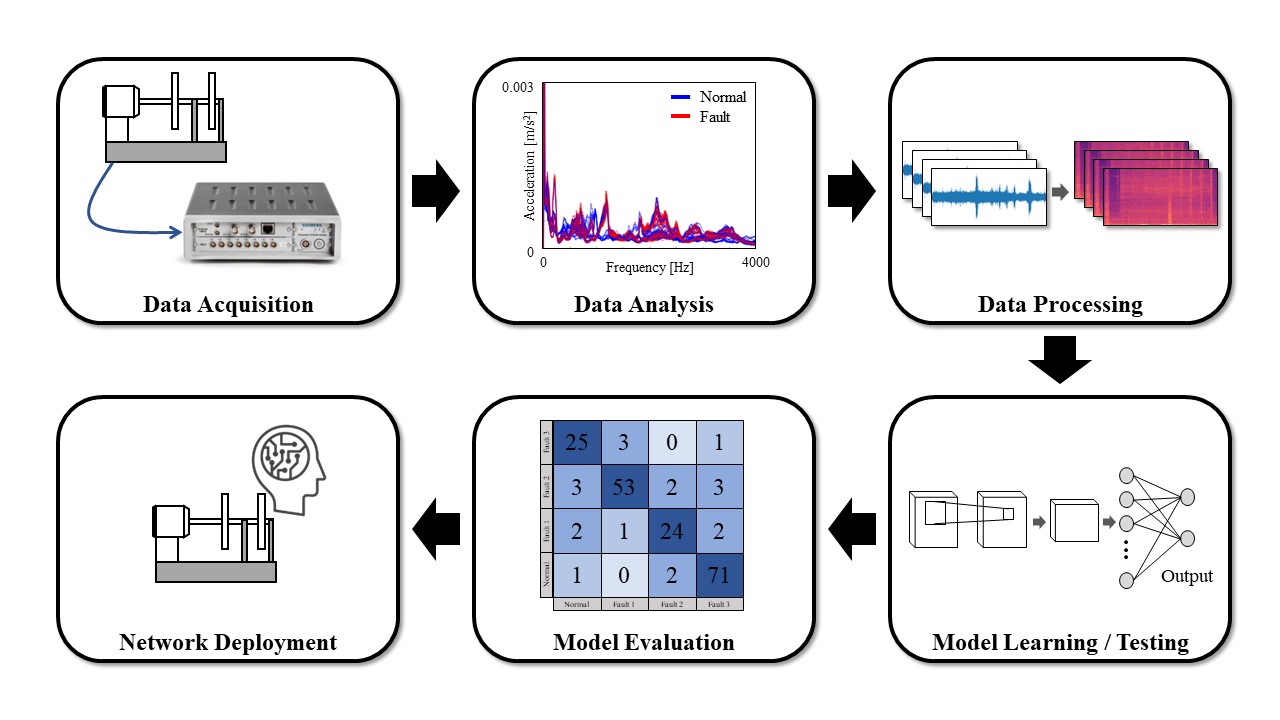AI Application in Fault Diagnosis
Fault Diagnosis using Deep Learning and Machine Learning Algorithms
Fault diagnosis is a critical task in many industries that rely on machines for their operations. Early detection of faults in machines can prevent unexpected breakdowns, reduce maintenance costs, and improve overall efficiency. Traditional methods of fault diagnosis often rely on human expertise and experience, which can be time-consuming, subjective, and error-prone. In recent years, there has been a growing interest in using machine learning and deep learning algorithms to automate fault diagnosis and improve its accuracy.
The basic idea behind using machine learning and deep learning algorithms for fault diagnosis is to analyze the noise and vibration signals generated by machines and identify patterns that are indicative of faulty or normal states. These signals can be captured using various sensors such as accelerometers, microphones, and strain gauges. The raw signals are then preprocessed to remove noise and other artifacts before being fed into the machine learning or deep learning models.
One common approach to fault diagnosis using machine learning is to use classification algorithms such as support vector machines, decision trees, or random forests. These algorithms are trained on labeled data, which consists of noise and vibration signals from machines that are either faulty or normal. The models learn to recognize the patterns in the signals that are associated with each state and use them to predict the state of new signals.
Deep learning algorithms, on the other hand, use neural networks with multiple layers to learn complex representations of the input signals. Convolutional neural networks (CNNs) are particularly effective for analyzing time-series data such as noise and vibration signals. CNNs can automatically extract features from the signals at different scales and capture both short-term and long-term dependencies.
One of the challenges of using machine learning and deep learning algorithms for fault diagnosis is the need for large amounts of labeled data. Collecting labeled data can be time-consuming and expensive, especially for rare or complex faults. To overcome this challenge, researchers have explored various techniques such as transfer learning, data augmentation, and unsupervised learning. Transfer learning involves using pre-trained models on a related task to improve performance on the target task. Data augmentation involves generating new labeled data by applying transformations such as scaling, rotation, or noise injection to existing data. Unsupervised learning involves using unlabeled data to learn representations of the signals without explicit labels.
In conclusion, fault diagnosis using machine learning and deep learning algorithms has the potential to revolutionize the way machines are maintained and operated. By automating the detection of faults, it can save time and money, improve safety, and increase productivity. However, there are still many challenges to be addressed, such as the need for large amounts of labeled data, the interpretability of the models, and the robustness of the models to different operating conditions. Nonetheless, with continued research and development, machine learning and deep learning algorithms can become an indispensable tool for fault diagnosis in various industries.

